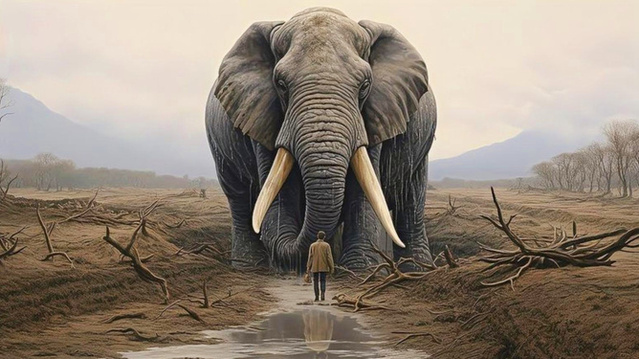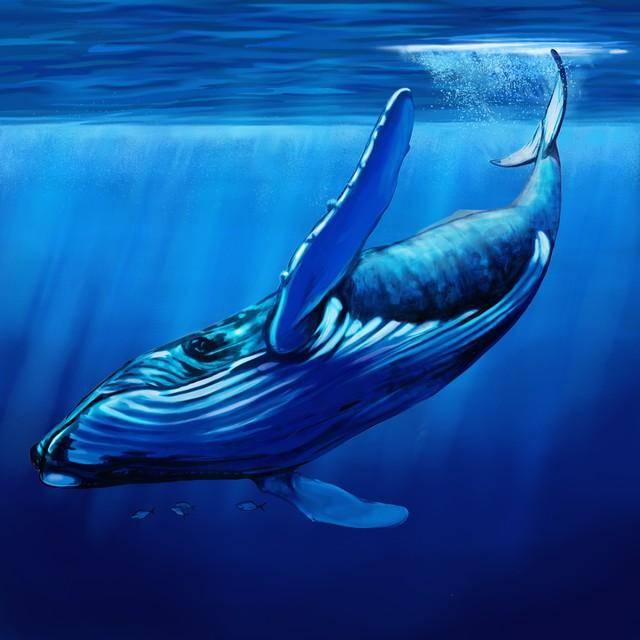In nature, strength is not just about size, many smaller animals surpass larger animals in relative strength. So who is the strongest animal in the world? The answer is not just giant Elephants-Are-Endangered.html">elephants or whales, many small creatures also have amazing strength. This article will take you to explore these strongest creatures in nature and their extraordinary abilities.

1. African Elephant
The King of Absolute Strength
The African elephant is the largest animal on land and a symbol of strength. Adult male African Elephants-Are-Endangered.html">elephants can weigh up to 12 tons. They can easily lift objects over 300 kilograms, knock down trees or move large rocks. The strength of Elephants-Are-Endangered.html">elephants is not only reflected in their trunks, but also in their powerful trunks. The trunk has about 40,000 muscles, which can lift heavy objects and perform fine movements.
Distribution: Mainly inhabiting the African continent south of the Sahara.
Strength: They can easily pull up trees weighing hundreds of kilograms.
King of Ocean Power
The blue whale is the largest animal on earth. An adult blue whale can weigh up to 180 tons, equivalent to the weight of 30 African elephants. The great power of the blue whale is mainly reflected in its ability to propel itself forward in the ocean. Their powerful tail muscles allow blue whales to swim easily at speeds of up to 50 kilometers per hour.
Distribution: Oceans around the world, especially the Southern Ocean.
Strength Highlights: The huge weight and power to push the ocean make it a "power giant" in the ocean.
Relative Strength Overlord
If calculated by weight ratio, Rhinoceros Beetle is undoubtedly the strongest creature on earth. They can lift objects equivalent to 850 times their own weight. In other words, if a person has the strength of a Rhinoceros Beetle, he can easily lift more than 60 tons. The powerful strength of Rhinoceros Beetle gives them a huge advantage in competing for territory and mates.
Distribution area: Tropical and subtropical regions around the world.
Strength Highlights: Can lift objects 850 times heavier than itself.
A combination of endurance and strength
Cockroaches are not only known for their tenacious vitality, but also for their extraordinary strength. A cockroach can withstand pressure equivalent to 900 times its own body weight and can easily squeeze into a very small space. In addition, when running, cockroaches can move forward at a speed of 50 times their body length per second, showing strong athletic ability.
Distribution area: All over the world, especially in warm and humid environments.
Strength highlights: Ability to withstand pressure of 900 times body weight and high-speed movement.
The strongest worker
The leafcutter ant is one of the most representative symbols of strength in nature. These tiny insects can carry objects that are 50 times their own weight. They mainly make a living by cutting plant leaves and carrying them back to their nests to grow fungus food. Through cooperation, the strongman ants have formed a collective force that can build huge nests and maintain the survival of the group.
Distribution area: Mainly found in the tropical rainforests of Central and South America.
Strength highlights: Can carry objects 50 times heavier than their own body weight and have amazing teamwork ability.
King of marine predator power
Killer whales are not only excellent hunters, but also one of the most powerful animals in the ocean. They are known for their efficient teamwork and powerful strength, and can hunt animals larger than themselves, such as seals and sharks. Adult killer whales can hit prey with their powerful tails and chase prey at extremely fast speeds, showing unparalleled strength.
Distribution: All major oceans around the world, especially in polar and temperate waters.
Strength: Ability to hunt large marine life and have a strong sense of teamwork.
King of strength in the cold ocean
Walruses can weigh up to 1.5 tons. Male walruses have a strong body that can push heavy objects or dig ice. Their tusks are not only used for fighting, but also for moving and walking on the ice. Walruses can use their powerful forelimbs and teeth to slide quickly on the ice and show their strength.
Distribution: Cold waters of the Arctic and subarctic.
Strength: Ability to push ice and survive in extremely cold environments with their tusks.
The world’s strongest animals are not all huge, but rather small creatures that are relatively powerful, demonstrating the diversity of strength in nature. From African elephants on land to blue whales in the ocean to small insects like rhinoceros beetles, each animal demonstrates unparalleled strength in its environment. Strength is not always determined by size, but by how that strength is used to adapt to the environment and ensure survival.

The largest animals are mainly distributed in the ocean and on land. Here are some of the largest animals:
Largest: The blue whale is the largest animal on Earth today, with an adult reaching 30 meters in length and weighing up to 180 tons. This giant marine mammal lives on a diet of tiny plankton despite its massive size.
Habitat: Oceans around the world, especially the Southern Ocean and the North Atlantic.
Runner-up: Fin whales are the second largest animal in the world, reaching up to 25 meters in length and typically weighing around 70 tons. Similar to the blue whale, they are also filter feeders, feeding mainly on plankton and small fish.
Habitat: Oceans around the world, especially in cold waters.
Sperm whales are the largest toothed whales, reaching up to 20.5 meters in length and weighing between 45-57 tons. Sperm whales have a huge head that accounts for about one-third of their body, and they mainly prey on squid and deep-sea fish.
Habitat: Oceans around the world, especially in deep sea areas.
Giant squids are the largest invertebrates in the world, reaching up to 12-13 meters in length, sometimes even longer. Their tentacles and body structure make them appear particularly large in the deep sea. Giant squid feed on fish and other squids in the deep sea.
Habitat: Deep sea areas, mainly in the Atlantic and Pacific Oceans.
Largest on land: African elephants are the largest animals on land. Adult male elephants can weigh up to 6-7 tons and have a shoulder height of up to 3.3 meters. They mainly live in grasslands and forests in sub-Saharan Africa, feed on a large amount of vegetation, and can eat more than 150 kilograms of food a day.
Habitat: Sub-Saharan Africa.
Great white sharks are one of the largest and most aggressive carnivorous fish, reaching lengths of 6-7 meters and weighing about 2 tons. They are top predators, feeding on seals, sea lions, and fish.
Habitat: Temperate oceans around the world, especially off South Africa, Australia, and California.
Whale sharks are the largest fish, reaching lengths of 12 meters and weighing more than 20 tons. Despite their size, they are gentle filter feeders, feeding mainly on plankton and small fish.
Habitat: Tropical and subtropical oceans, especially the Indian and Pacific Oceans.
Giraffes are the tallest animals on land, with adult males reaching up to 5.5 meters tall. Although they are usually much lighter than African elephants (about 1,200 kilograms), their tall size makes them very conspicuous in the crowd.
Habitat: Grasslands and forests of sub-Saharan Africa.
These animals are extremely representative in size and weight, demonstrating the diversity of nature and the extraordinary ability of organisms to adapt to the environment. They are often at the top of the food chain or play an important role in the ecosystem due to their large size.
animal tags: Blue-Whale African-Elephant Rhinoceros-Beetle Walrus
We created this article in conjunction with AI technology, then made sure it was fact-checked and edited by a Animals Top editor.